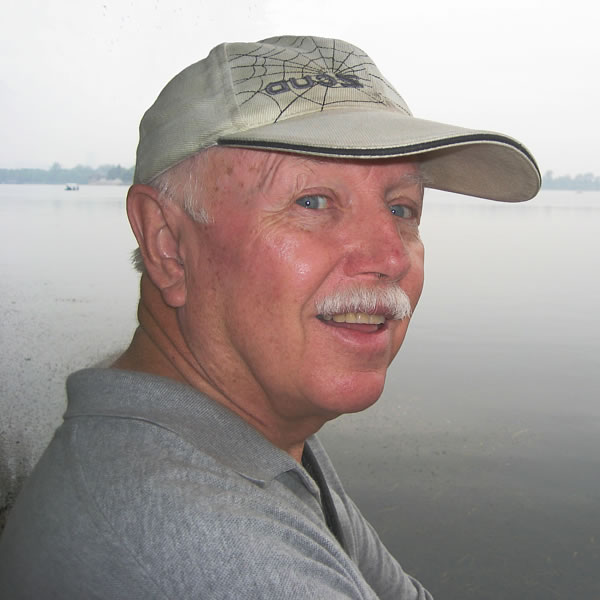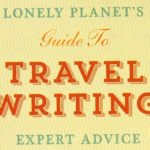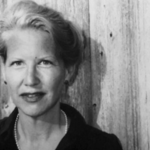In the late 1960s, David Stanley’s right thumb carried him south from Toronto to Mexico, where he passed a year in several small towns around Guanajuato. Spanish and Italian literature studies at universities in Canada, Spain, and Italy came next, culminating in an honors degree (with distinction) from the University of Guelph, Canada. After graduation Stanley hit the road again, visiting 175 countries and crossing six continents overland. His travel writing career began in 1979, and over the next two decades he produced nine trailblazing guides for Moon Handbooks and Lonely Planet. After five years in Amsterdam, David returned to Canada in 1996.
How did you get started traveling?
Traveling has been my escape. Whenever I seemed to be heading down a blind alley or couldn’t find anything worthwhile to do, I hit the road. In 1972 I got bogged down in an M.A. program in Spanish literature and decided to make a real break. I trashed everything and drove a borrowed Mercedes limousine nonstop from Toronto to Miami in 30 hours. There my girlfriend and I bought one-way tickets to South America via a raft of Caribbean islands. We hitched from Brazil to Peru in 10 months. In Argentina we were almost shot soon after Peron died, and in Chile during we experienced the early Pinochet terror. Our trip ended at Machu Picchu when my girlfriend’s backpack was stolen — she freaked. Back home, we both got jobs with a tour company and spent the next few years shepherding Canadian “snowbirds” around Castro’s Cuba.
How did you get started writing?
Between winters working in Cuba and the Dominican Republic, I explored Asia in stages. I saw everything from Okinawa to Kabul from ground level (my former girlfriend declined to accompany me this time). After a few months in Indonesia, I sent an obscure travel guide a stack of corrections, comments, and additions, as requested in the front of the book. The author, Bill Dalton, replied cordially, and we began corresponding. I also mailed Tony Wheeler feedback on the original Southeast Asia on a Shoestring, but he merely thanked me. The next year I’d planned to visit the Pacific islands, and I suggested to Bill that he add information on the South Pacific to his Indonesia guide as nothing at all was available on the region. Bill replied that his Indonesia Handbook was already bursting at the seams and a separate book was required. That became the first edition of South Pacific Handbook, published in June 1979. By 1980 the book was selling well enough for me to drop out of the package tour business and devote myself full time to guidebook writing.
What do you consider your first “break” as a travel writer?
My big break came in 1986 when I reestablished contact with Tony Wheeler. Bill was expanding Moon Publications too quickly and my royalties weren’t being paid on time. After a big trip around Eastern Europe, I was brimming with enthusiasm for a region little known or understood by “westies.” Tony immediately accepted my proposal for Eastern Europe on a Shoestring, and it became Lonely Planet’s first guide to Europe, published in April 1989 — only six months before the fall of the Berlin Wall. By early 1990, western tourists were flooding into Budapest and Prague and my book was the only one on the market. I wrote two more editions of Eastern Europe, but by 1996 I’d become burned out on the area and sold the copyright to the Wheelers. Of course, Tony didn’t want to lose me and cleverly offered another jewel: Cuba. The second edition of my Cuba guide is still being sold, along with a hoard of new kids on the block.
As a traveler and fact/story-gatherer, what is your biggest challenge on the road?
I guess my biggest challenge is maintaining my privacy and independence. I travel incognito and don’t solicit freebies or favors from anyone. But I’m forced to ask a lot of questions, and people sometimes guess who I am. And if everyone knows who you are and what you’re doing, it becomes difficult to get the information you need. I like to experience things naturally, as my readers will experience them, not as part of some orchestrated show. If people guess who I am, I deny it. My worst experience to date occurred in a hotel dining room at Santiago de Cuba when a tourist with a huge video camera came up and began filming me as I was having lunch. A couple of women from another table came over with him and asked me to sign a copy of my Cuba book. I told the women they’d made a mistake and abruptly waved the cameraman away. They had put me in a dangerous situation. I was in Cuba on a tourist visa, illegally researching my guide without government permission. My notes could have been seized and I might have been interrogated. I tried to explain that to the video guy in the departure lounge as we were waiting for our flight back to Toronto, but I guess he just figured I was a jerk.
What is your biggest challenge in the writing process?
Staying focused. I love the Internet and think it’s almost as good as real travel. In some ways it’s even better as you can go anywhere in the world in an instant for free without any discomfort or risk at all. But it draws me away from my writing and absorbs my time. I get lots of great new information off the web but I now spend twice as long writing a book as I used to. Maybe it’s middle age. The Internet is an addiction, and these days one of the first things I search for on the road is access. I can’t see any escape other than total withdrawal.
What is your biggest challenge from a business standpoint?
Maintaining my position. Lonely Planet is a fantastically successful operation for which I have only admiration. They’ve always treated my fairly and honestly, but they’ve also steadily undermined my position. When I signed up for Eastern Europe in 1986 I was allowed to keep my copyright and paid a 10 percent royalty on all sales. The contract for the first edition of Cuba signed in 1996 gave Lonely Planet the copyright but granted me the right to do the next three editions. I was to be paid a flat fee, plus royalties on sales over 30,000 copies and all foreign editions. The second edition contract in 1999 withdrew the right to do future editions and royalties on foreign editions other than the French one. My 2001 contract for the first edition of Lonely Planet Canada’s Maritime Provinces offered only a flat fee and no royalties or rights at all. These days, Lonely Planet authors are mere writers for hire who can be replaced or reassigned as the powers that be at Lonely Planet see fit. It’s useless for a Lonely Planet writer to try to establish any sort of relationship with his/her area or stay in touch as there’s no guarantee they’ll ever work on that book again. If they do, Lonely Planet will set the terms. I’ll probably never cover Canada’s Maritime Provinces for them again. That’s why I’m now concentrating on my South Pacific books which I still own in full. Moon Handbooks may not be as aggressive business-wise but they aren’t constantly trying to undermine their writers.
Do you do other work to make ends meet? If so, what kind of work?
Since 1980, my entire earned income has derived from my writings. Luckily, my Lonely Planet books have done very well, and I’ll always be indebted to Tony Wheeler. I may go back into the tour business eventually, and in July 2003 I’ll be leading a couple of educational tours to the South Pacific for Harvard University and the American Museum of Natural History.
What travel authors or books might you recommend and/or have influenced you?
The two writers who influenced me most are Bill Dalton and Tony Wheeler. I recommend Lonely Planet’s Thorn Tree as the place to feel the pulse of travel. I’m ashamed to admit it, but about the only books I read these days are travel guides. In my old age I hope to get back to the classics I studied at university.
What advice and/or warnings would you give to someone who is considering going into travel writing?
As Dante said in the Inferno, “Abandon all hope, you who enter here.” Publishers have all the power and you’ll be asked to sign away all of your rights. Writing for Lonely Planet can be a great learning experience and their fees aren’t bad, but don’t look upon it as a lifetime career. Consider self-publishing, and to keep costs low, plan to specialize in your own home area. Think globally, act locally. Decide right from the start which particular area that is and don’t give it away by signing a binding contract with non-competitive provisions. Instead, offer to cover some exotic locale you may never visit again, and once you’ve learned the ropes from the likes of Lonely Planet, Frommers, or Fodor, write your own intimate guide to your backyard. You’ll also need a day job to pay for the groceries.
What is the biggest reward of life as a travel writer?
I guess it’s becoming established and known in an area. I’ve been writing about the South Pacific since 1979 and people take me seriously. Literally tens of thousands of travelers have used my guides to the Pacific islands on a day-to-day basis. I like being able to help the little guy by promoting obscure pensions that cost a tenth the price of a Sheraton or Inter-Continental. And it’s great to read feedback from readers who have shared experiences. I hope my books have helped travelers see the world with fresh eyes, whether by learning about the environmental or social issues ignored in the brochures or simply gaining the confidence to explore new areas undiscovered by even the intrepid backpack brigade. Travel can be the ultimate freedom if approached with an open heart.





